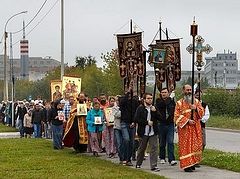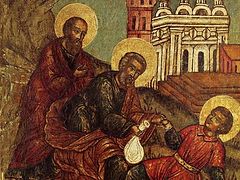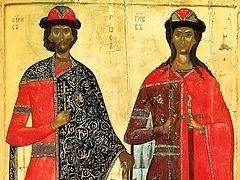July 24/August 6 marks the commemoration of the Holy Martyrs and Passion-bearers Boris and Gleb of Russia, in holy baptism Romanus and David (1015), the youngest sons of Great Prince Vladimir, who were martyred by their older brother Svyatopolk, giving their lives to avert the suffering of others that surely would have ensued were there a fight for the crown. St. Boris stated, "Be it not for me to raise my hand against my brother. Now that my father has passed away, let him take the place of my father in my heart." After five years their bodies were discovered to be incorrupt and were laid to rest in the church of St. Basil in Vyshgorod, near Kiev. Their tomb became such a place of pilgrimage, and so many miracles were worked at their relics that the Church soon officially glorified them and numbered them among the saints. Following the brothers' example, Russian piety is characterized by such humility and an embrace of suffering for the love of Christ.
Many parishes and monasteries have been named in the honor of these first Russian saints. Below is the story of the great Boris and Gleb Monastery in the Yaroslavl region, taken from the site Art Russian Painter:
* * *
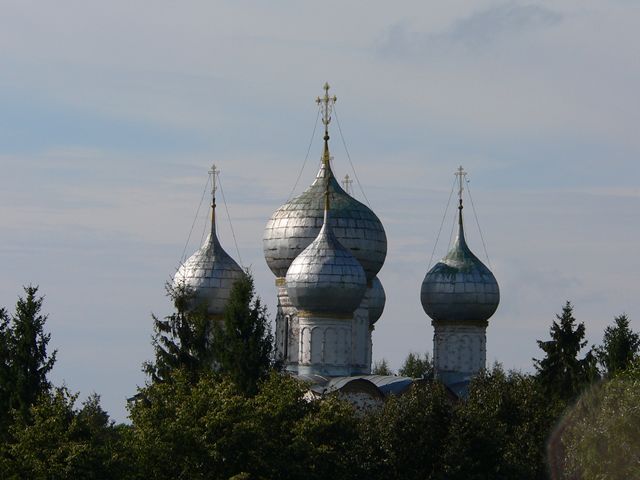
Boris and Gleb Monastery amazes travelers by its stark beauty. It is miraculous how it has survived and remains so well-preserved for its old age—650 years. The view of these huge walls causes not a few raised eyebrows. They are even firmer than is necessary to protect from wordly sins. Boris and Gleb Monastery isn’t just a religious building—it is a real fortress with heavy gates and towers. The monastery is situated in the Yaroslavl region twenty kilometers from Rostov the Great in the cradle of the great Russian nation. All around are Russians—everyone is an insider for thousands of kilometers around. When these walls were being erected the local people still remembered the Mongol raids, the civil strife of princes, and they were preparing for the encroachment of the Polish invaders.
It was the time of troubles. It left its memory in the names of the neighboring villages: Dushilivo (from the word smother), Krovopuskovo (from the word bleeding) … Only the heart is missing from the maps of the Borisoglebsk region, but if you want to find it you should go to its main monastery. It is the monastery that became the center around which Borisoglebsk Village arose. Everything that happened within its walls immediately echoed in the life of everyone around. Venerable Irinarkh came to the monastery from the nearest village Kondakovo. Irinarkh was an ascetic (end of sixteenth—beginning of seventeenth century) who with God’s blessing entered through the gate in heavy chains to suppress his flesh. He slept only one hour a day for thirty eight years in a small cell of less than four meters.
Irinarkh was one of those who blessed Minin and Pozharsky. People believe that Irinarkh with his prayers banished all enemies from the monastery and saved it.
Boris and Gleb Monastery was founded in honor of the first Russian saints, Boris and Gleb. The monastery was formerly very famous. St. Sergius of Radonezh, Ivan the Terrible, Dmitry Pozharsky and Kuzma Minin were among the visitors to the monastery. It is believed that the legendary Peresvet was a monk of the monastery. All great Moscow princes and tsars, starting with the grandson of Dmitri Donskoi—Vasily the Dark II—and finishing with the first tsars from the Romanov dynasty were very attentive to the Monastery, granting it rich land and money investments.
In spite of the untouchable air the heart of Borisoglebsk, it is changeable as is everything spiritual in this world: sometimes it is swept by the flood of passion, sometimes it is sunken in sleepy peace and quiet. Each new resurgence of the monastery is transmitted far beyond its borders, to the Borisoglebsk region and beyond to all the countryside, to each person whose heart was even once touched by this outstanding place.
* * *
Russia Beyond the Headlines offers many glorious photos of the Boris and Gleb Monastery:
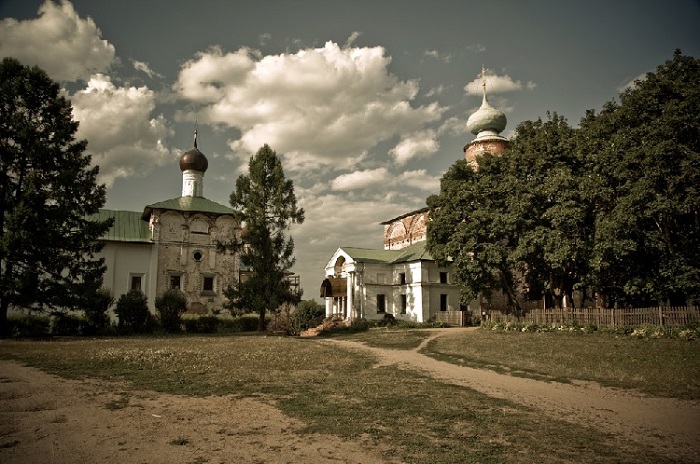
18 km from Rostov lies the settlement of Borisoglebsky. Its main attraction is the monastery, founded in honor of the first Russian saints, Prince Boris and Prince Gleb.
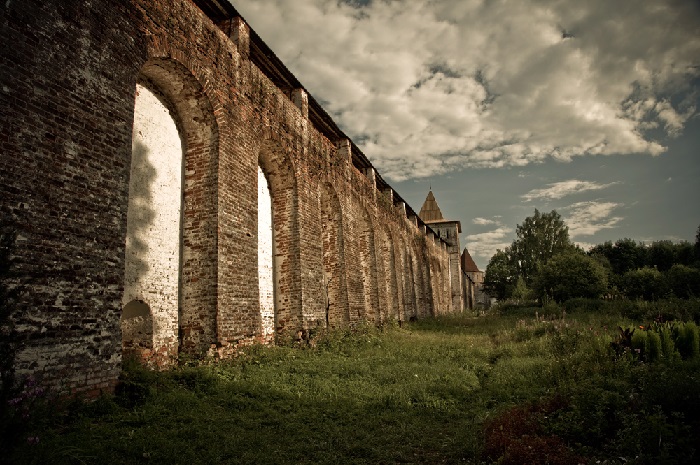
Borisoglebsky Monastery is a male Orthodox monastery on the road from Rostov to Uglich (in the village of Borisoglebsky), part of Russia's Golden Ring.
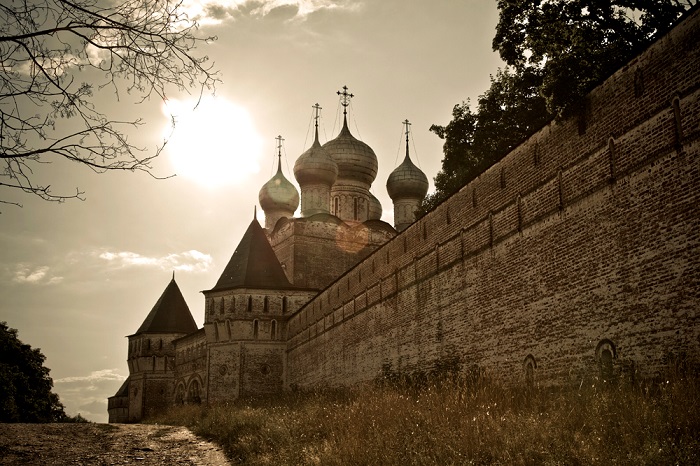
With its shrines, historical monuments, and picturesque location, this ancient monastery is one of the finest in Russia.
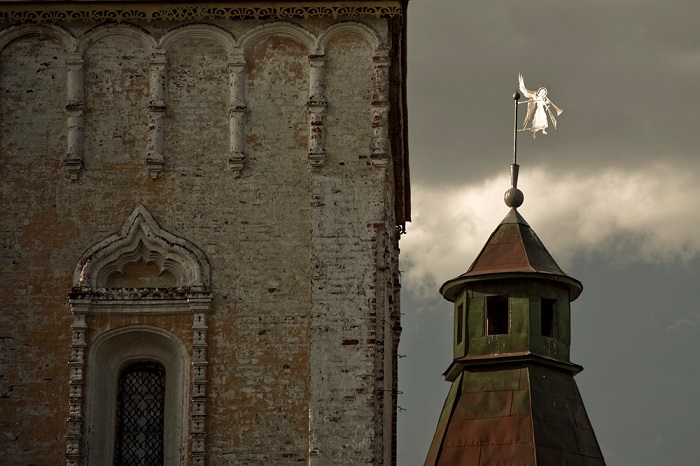
The location of the monastery was very advantageous. The road from Moscow and Rostov to Uglich passed nearby, continuing onwards to Kargopol and Beloozero. The Ustye River remained navigable most likely until the end of the 17th century.
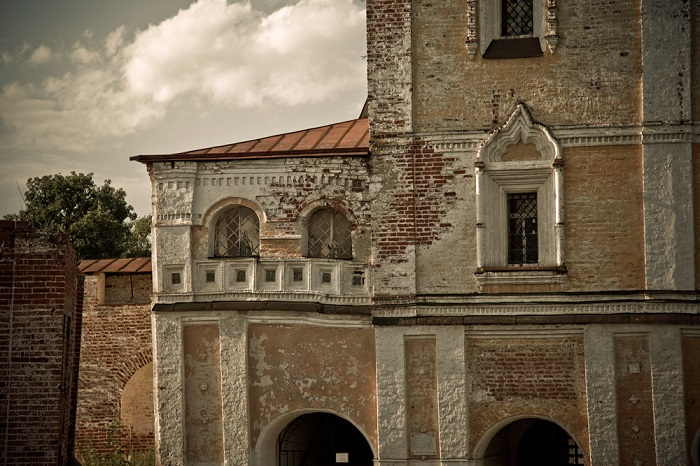
The monastery was founded by the Novgorod monks Fedor and Pavel in 1363.
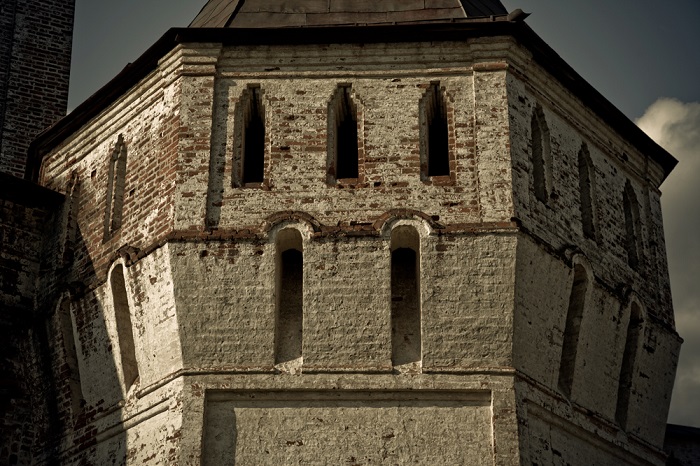
The architectural complex of the monastery took shape before the Peter the Great's rule, when it was one of Rostov's most prosperous dioceses.
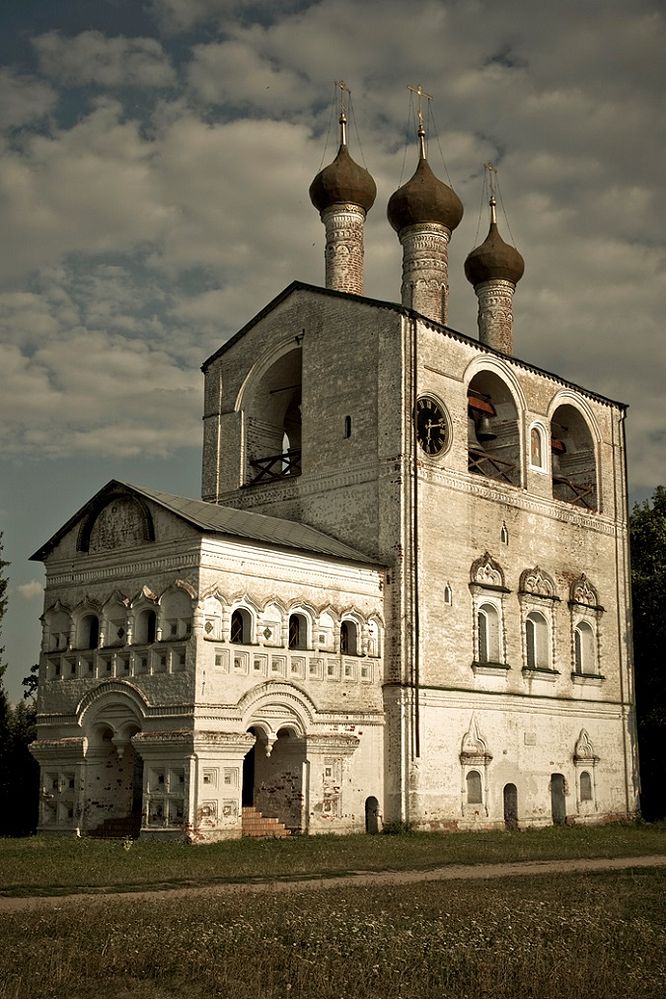
The building facades clearly reflect the influence of Italian architects who worked in Moscow at the beginning of the 16th century.
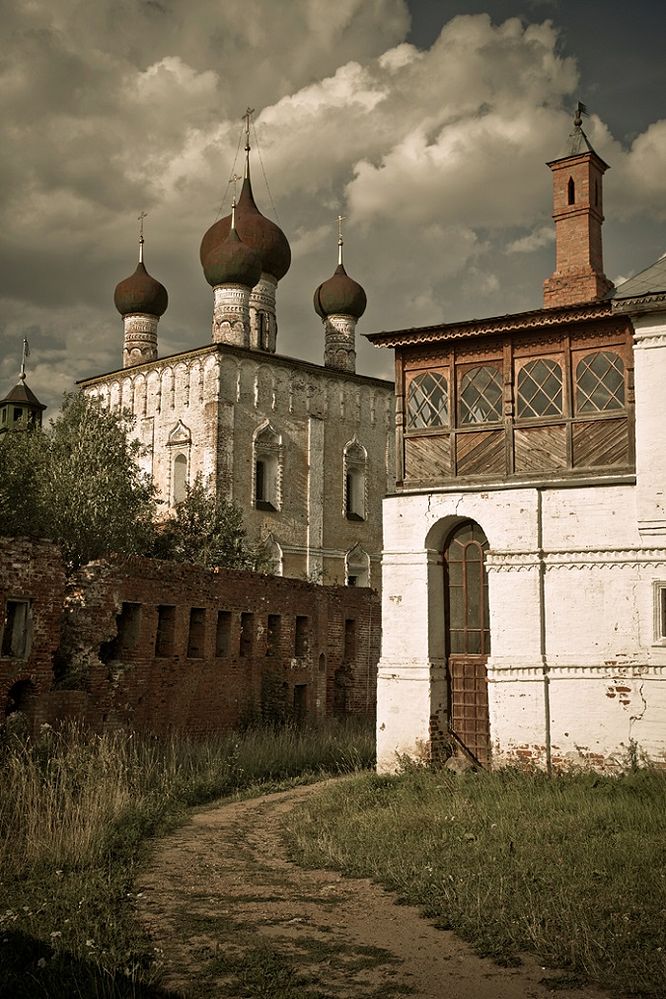
Borisoglebsky Monastery was loved by Moscow's princes and the first Russian tsars, who regarded it as "home."
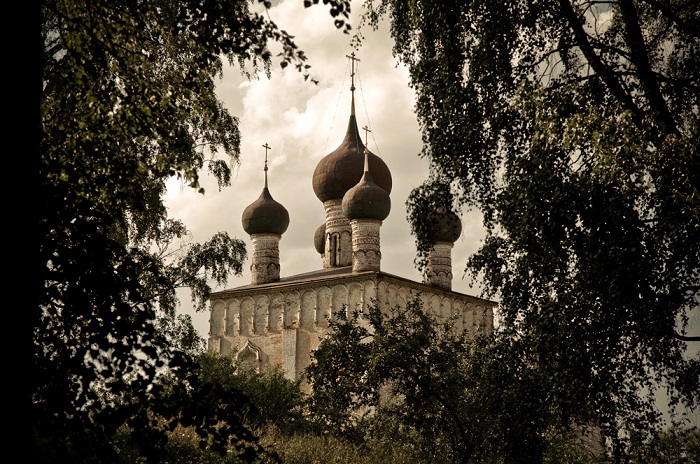
The first stone structure at Borisoglebsky Monastery was St. Boris and Gleb Cathedral.
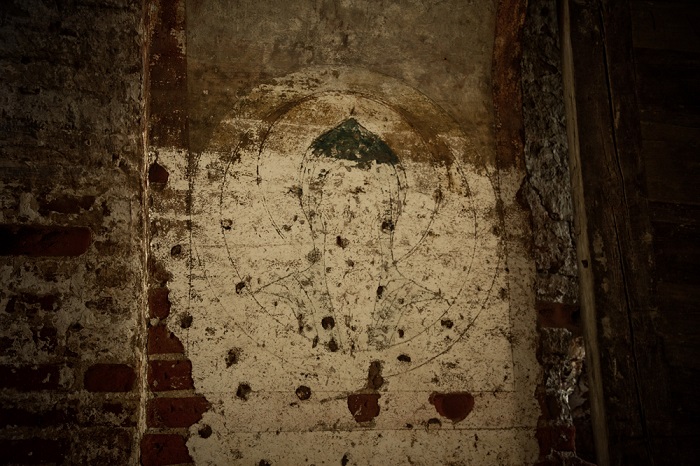
During holidays and festivals, a rich fair traditionally took place by the walls of the monastery.
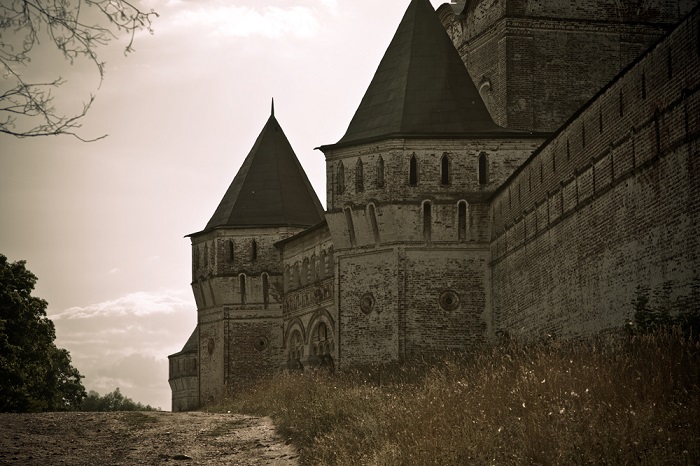
In 1764, Catherine II presented the settlements to her favorite, Count Grigory Orlov.
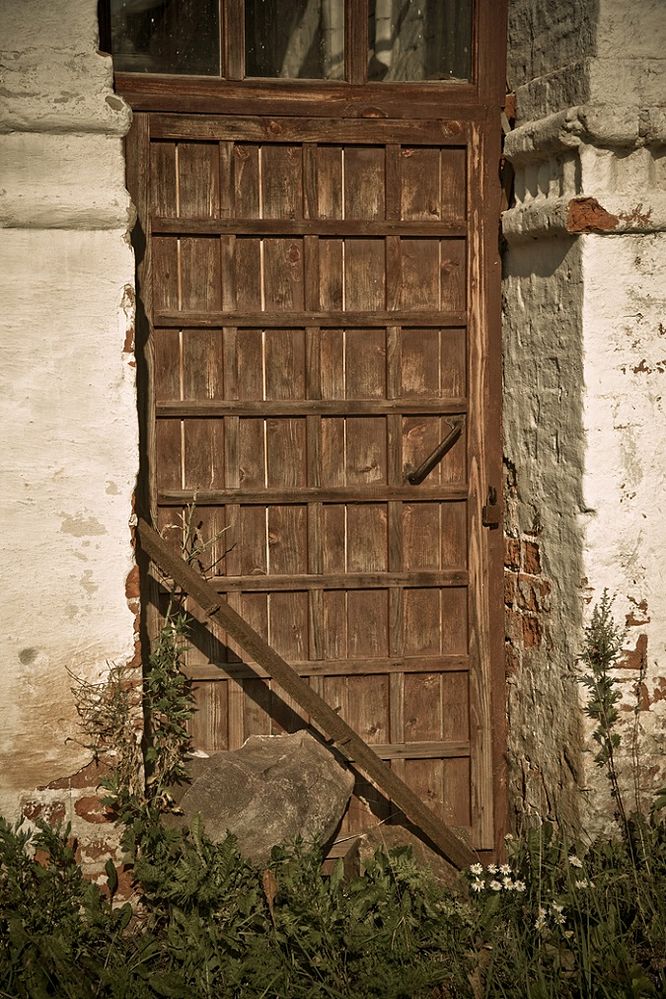
Borisoglebsky Monastery was officially deconsecrated in 1924. Some of the buildings were transferred to Rostov State Museum.
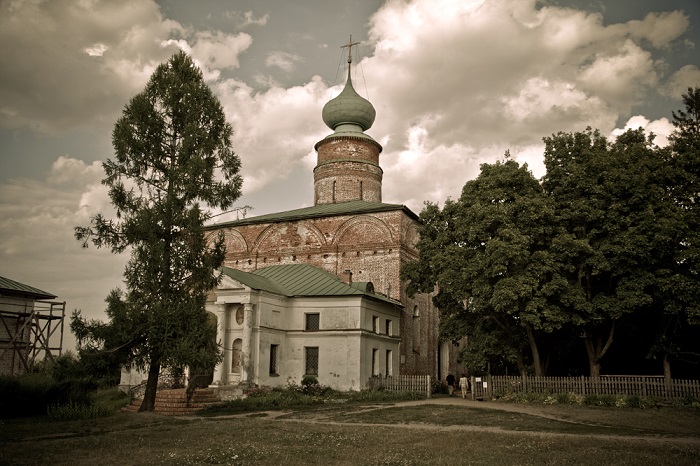
In 1962, the former monastic settlements received the status of urban locality.
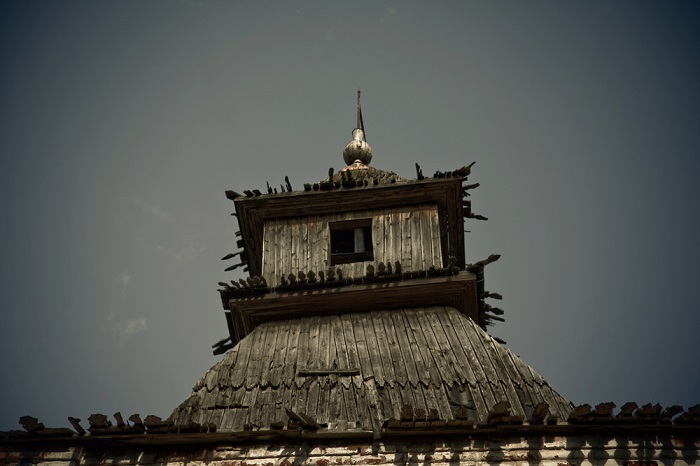
The monastery was reconsecrated in 1994.
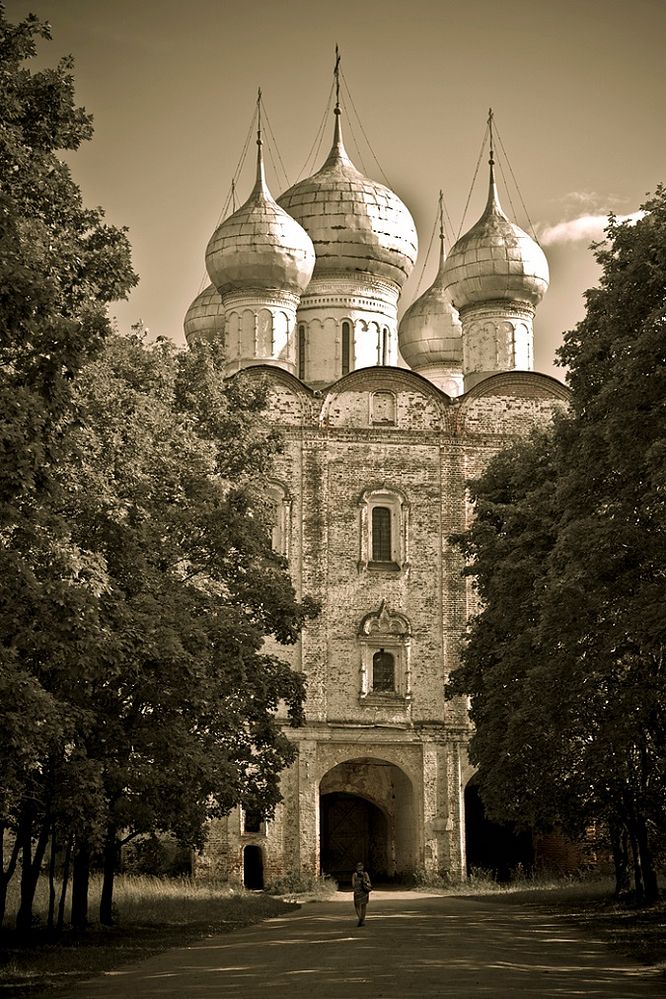
A branch of the Rostov Kremlin State Museum now stands on the site of Borisoglebsky Monastery.
* * *
Many beautiful photos of the monastery can also be viewed at the Art Russian Painter site.

